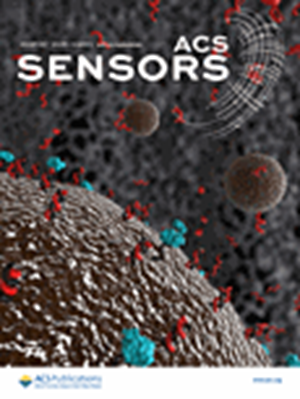Efficient ppt-Level H2S Gas Sensor Based on YSZ and α-Fe2O3 Nanofoam Sensing Electrode
IF 8.2
1区 化学
Q1 CHEMISTRY, ANALYTICAL
引用次数: 0
Abstract
Herein, porous α-Fe2O3 nanofoam was successfully synthesized and used as a sensing electrode to fabricate a yttria-stabilized zirconia (YSZ) mixed-potential hydrogen sulfide (H2S) sensor for real-time monitoring of hazardous H2S gas. The sintering temperature was adjusted to modify the microstructure of the sensing electrode material and its electrochemical reaction intensity to H2S, enhancing the sensor’s performance. Among the tested materials, α-Fe2O3 nanofoam sintered at 800 °C exhibited the highest electrochemical catalytic activity toward H2S in electrochemical tests, suggesting its suitability as a sensing electrode material for YSZ-based H2S sensors. The sensor incorporating α-Fe2O3 nanofoam sintered at 800 °C achieved the highest response of −273 mV to 10 ppm of H2S at 625 °C. Moreover, this sensor exhibited a low detection limit of 100 ppt and, within the H2S concentration range of 0.5–10 ppm, a high sensitivity of −180.3 mV/decade, outperforming other reported YSZ-based H2S sensors. Furthermore, this fabricated sensor exhibited excellent repeatability, selectivity, and long-term stability, indicating its potential for industrial safety early warnings and precise environmental monitoring. This study provides a valuable reference for designing porous sensing electrode materials and enhancing the sensing performance of mixed-potential gas sensor.

基于YSZ和α-Fe2O3纳米泡沫传感电极的高效pt级H2S气体传感器
本文成功地合成了多孔α-Fe2O3纳米泡沫,并将其作为传感电极制备了氧化钇稳定氧化锆混合电位硫化氢传感器,用于实时监测有害硫化氢气体。通过调整烧结温度,改变传感电极材料的微观结构和对H2S的电化学反应强度,提高传感器的性能。在所测试的材料中,α-Fe2O3纳米泡沫在800℃烧结时对H2S的电化学催化活性最高,表明其适合作为ysz基H2S传感器的传感电极材料。采用α-Fe2O3纳米泡沫的传感器在800℃下烧结,在625℃下,对H2S浓度为10 ppm时的最高响应为- 273 mV。此外,该传感器的检测限低至100 ppt,在H2S浓度范围为0.5-10 ppm时,灵敏度高达- 180.3 mV/decade,优于其他基于ysz的H2S传感器。此外,该传感器具有优异的可重复性、选择性和长期稳定性,表明其在工业安全预警和精确环境监测方面的潜力。该研究为设计多孔传感电极材料,提高混合电位气体传感器的传感性能提供了有价值的参考。
本文章由计算机程序翻译,如有差异,请以英文原文为准。
求助全文
约1分钟内获得全文
求助全文
来源期刊

ACS Sensors
Chemical Engineering-Bioengineering
CiteScore
14.50
自引率
3.40%
发文量
372
期刊介绍:
ACS Sensors is a peer-reviewed research journal that focuses on the dissemination of new and original knowledge in the field of sensor science, particularly those that selectively sense chemical or biological species or processes. The journal covers a broad range of topics, including but not limited to biosensors, chemical sensors, gas sensors, intracellular sensors, single molecule sensors, cell chips, and microfluidic devices. It aims to publish articles that address conceptual advances in sensing technology applicable to various types of analytes or application papers that report on the use of existing sensing concepts in new ways or for new analytes.
 求助内容:
求助内容: 应助结果提醒方式:
应助结果提醒方式:


